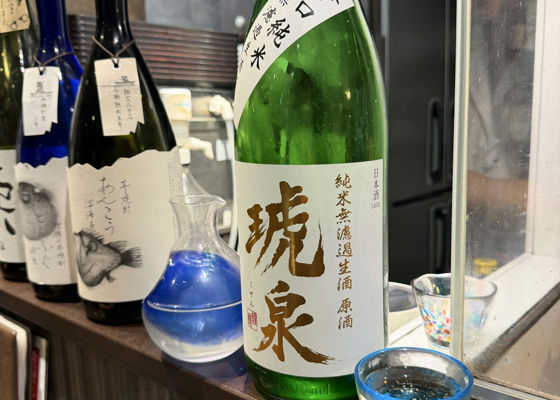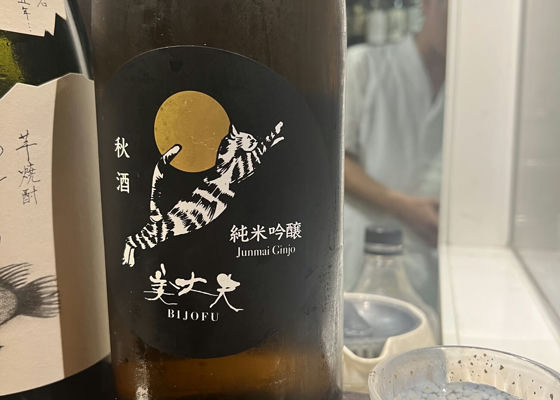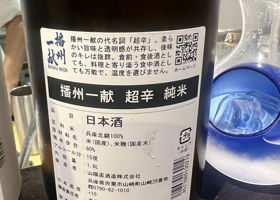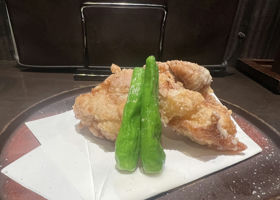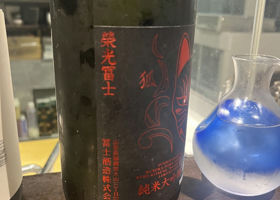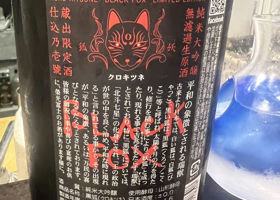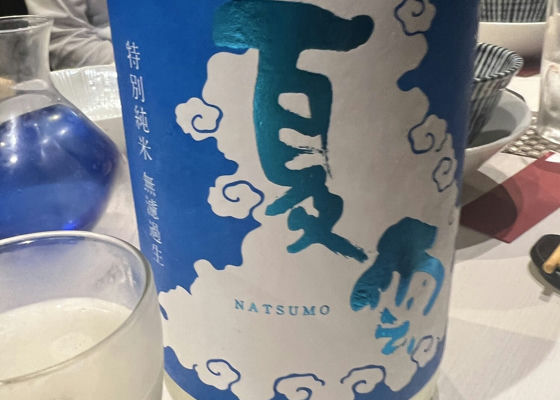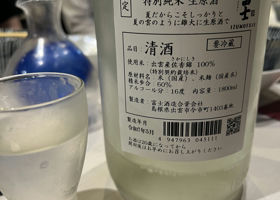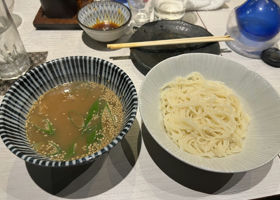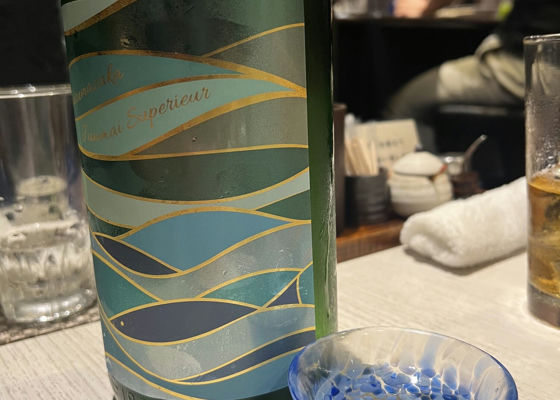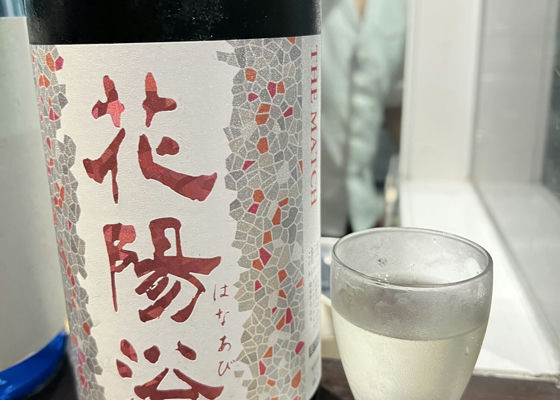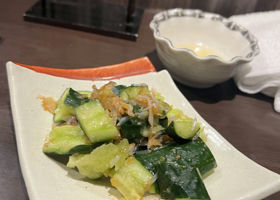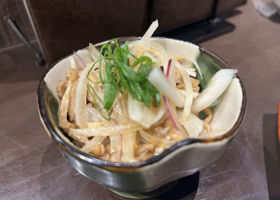Timeline
じゅんさんA rare sake that tastes great hot.
Sake No. 6 is made with Association No. 6 yeast.
Also known as Shinsei yeast.
The taste is refreshing and crisp when heated. It has a nice sharpness. I drank it cold, but warming it up is the right way to drink it.
Rice : Koji rice, Japanese rice, Polishing ratio 65
Kake rice : Domestic rice, Polishing ratio 65
Yeast used: Association No. 6
Alcoholic strength: 15 じゅんさんIt has been a long time since I have had Nada sake. It is another label of Izumi Shuzo, famous for Senzuke. This is the first time I have had it.
It is an elegant dry sake, far from the image of Nada's sake as a man's sake.
The unfiltered unpasteurized sake is fresh and delicious.
Ingredients: Rice (domestic), rice malt (domestic)
Rice polishing ratio 70%.
Alcohol content 16 じゅんさんI've never heard of this sake.
It is a sake that is both a little sweet and dry, but perhaps the bottle had been opened a little while and the taste was a little blurred. I heard it is actually quite sharp.
Ingredients: Rice (domestic), rice malt (domestic)
Rice: 100% Gin-no-Iroha
Polishing ratio 50%.
Alcohol content 15 じゅんさんThe last sake of the day was Kochi's Bikyuu, Cat Label. Autumn Sake.
It is slightly dry and light, but perhaps because it is an autumn sake, it has a good mouthfeel and a fruity depth.
Rice: Matsuyama Mitsui
Rice polishing ratio: 55
Yeast used: AA-41
Sake meter rating: +4
Acidity: 1.6
Alcohol content: 15 じゅんさんThe dry sauce goes well with the crispy and juicy fried chicken from Tori-Surround.
The matching sake is,
Banshu Issen Super Dry Junmai.
It has a firm mouthfeel and a nice sharp aftertaste!
Rice used: 100% Hyogo-Kitanishiki
Polishing ratio 60
Alcohol content 15 じゅんさんSlightly bitter, slightly spicy, autumn rise.
Rice: Kitakata-produced Yumeko & Gohyakumangoku 60% polished rice
Yeast: Utsukushima Yume Yeast & Kiyo yeast
Sake meter: +1
Acidity: 1.6
Sake strength: 15% (undiluted) じゅんさんTime for the Master Black Fox.
The year 2025 has come and gone.
The aroma is rich but the acidity is strong, so on the contrary, it is still easy to drink. It is delicious.
Polishing ratio 50%.
Sake rice used: 100% Omachi Nishiki
Yeast used: Yamagata yeast
Sake degree ±0
Acidity 1.6
Amino acidity 0.9
Alcohol content 16.3 じゅんさんThe last one is Izumo Fuji and Natsukumo, which are only available in summer.
It can be drunk lightly.
Finish with Inaniwa udon noodles.
Alcohol content 16%.
Rice Polishing Ratio 60
Ingredient rice: 100% Sakonishiki produced in Izumo City (specially contracted rice) じゅんさんAcid and gassy.
A very tasty sake that leaves a lot of flavor.
Saga doesn't have wineries, but they do have Nabeshima!
Recommended.
Rice polishing ratio: 55
Alcohol content: 15%. じゅんさんJapan's first female Noto Toji, Akiko Fujita, creates sake that goes well with meals.
Light and refreshing, this is a summer sake that goes well with anything and does not get in the way.
Rice type : Koji:Yamadanishiki, Kake:Miyamanishiki
Rice Polishing Ratio : Koji:50% Kake:60
Alcohol content : 15.9
Sake degree: +3.3
Acidity: 1.7 Hiran極辛口ブラックジャック 鄭成功 BLACKJACK Tei Seiko純米吟醸 じゅんさんDry +15 with good sharpness.
It is so sharp that fried foods and meats go well with it.
Ingredients Rice(domestic),Rice malt(domestic)
Alcohol percentage 15
Rice used: Koji rice: Yamadanishiki/Kake rice: Nikkomaru (all 100% grown in Hirado)
Polishing ratio 60
Yeast used: 901
Sake degree +15
Acidity 2.0
Amino acidity 1.1 じゅんさんThis is a project launch in the season of summer sake!
Refreshing to drink, with a clean aftertaste.
Neither dry nor sweet, just right sake.
Rice: Hachitan-Nishiki produced in Hiroshima Prefecture
Polishing ratio 50%.
Alcohol content 14 Hanaabi純米吟醸 THE MATCH55 無濾過生原酒純米吟醸原酒生酒無濾過 じゅんさんA blend of Yamadanishiki and Omachi, which we had a few months ago. It is as gorgeous and delicious as ever.
Rice polishing ratio: 55
Alcohol content: 16%. じゅんさんThis is the first time Ash has been in the Colors series.
Many Niimasa sakes have strong personalities, but this one is a delicious sake with a good balance.
Alcohol content: 13% (original)
Rice: 100% Akita Kame-no-o
Yeast used: Kyokai No. 6
Polishing ratio: Koji rice 45%, Kake rice 45
Characteristics: The taste is deepened by increased use of the raw yeast and prolonged refrigerated storage. じゅんさんThis is Kido's summer sake, which we were told was quite popular at the restaurant.
As the name "Natsu no Shippu" suggests, it is a very refreshing, easy-drinking, gubi-gubi type sake.
Rice used: Gohyakumangoku
Polishing ratio Koji rice: 50% / Kake rice: 55
Alcohol content 15 じゅんさんMimuro Cedar, which was opened on this day.
I was told that it is an introductory version of Bodimotsu. So it is not brewed in a wooden vat, but in a thermal tank.
That is why it is not brewed in a wooden vat, but in a thermal tank. I have been drinking a lot of Mimuro-sugi, but I did not understand it. I regretted it.
And then the tasting.
It is very tasty.
The peachy aroma is nice, and the acidity and umami are well balanced. The alcohol content is 13% even though it is a pure sake.
You will want to keep it all to yourself.
Specified Name Not disclosed
Rice used: Yamadanishiki
Polishing ratio: undisclosed
Alcohol content 13% (undiluted) じゅんさんIt's been a long time since I've been in Torisaki.
The first drink of the day was a very dry one of the moon after the rain.
Really dry at +14! And yet very tasty! I highly recommend this.
Don't forget to have a side dish of sake.
◎Tataki cucumber with ume plum paste
◎Ponzu sauce with chicken skin
Ingredients : Rice, Rice malt
Alcohol Content: 16
Sake meter degree : +14
Ingredient Rice type : Hachitan-Nishiki, Hiroshima
Rice polishing ratio:65 じゅんさんTaste is consistent and smooth.
It is not unpleasant, easy to drink, and has no cloying taste.
Ginjo is very good as an everyday sake.
It is very nice as an everyday sake.
This is the brewer of Tasake. It is delicious.
Alcohol content 16%.
Ingredients: Rice (domestic), rice malt (domestic), brewing alcohol
Rice polishing ratio 55
Date of production: 2025.04 じゅんさんI love Mimuro Sugi, but they use dewy leaf style sake rice, so it has a robust flavor, dry but a little sweet.
This is a new experience.
Ingredients: Rice (domestic), Rice malt (domestic)
Ingredient Rice 100% dewy mildew
◆Polishing ratio 60
Alcohol content 15 じゅんさんI asked for a clear dry sake, but since it had been open for a while, it was surprisingly mellow and had a strong aftertaste.
It is a delicious sake, but I would like to pair it with dishes that have a strong flavor.
Ingredients: Rice (domestic), rice malt (domestic)
Rice polishing ratio 60
Alcohol content 15 RecommendedContentsSectionView.title

